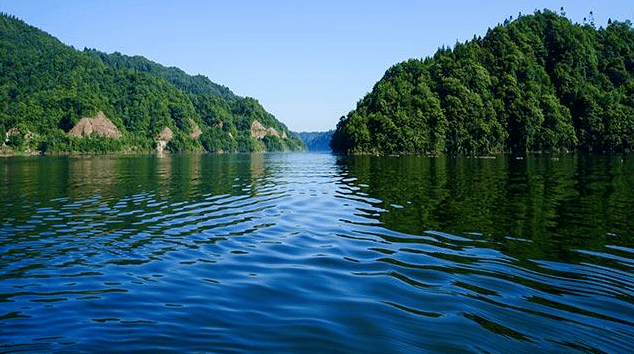There are several types of water that meet human water supply needs, including surface water and groundwater. Surface water includes any fresh water that flows into wetlands, river systems and lakes. Groundwater is found in underground aquifers located beneath the ground. Most groundwater comes from snowmelt and rainfall and enters bedrock through the surrounding soil. As this water flows downward, it settles between cavities and fractures in the rock layers.
To better understand the difference between surface water and groundwater, groundwater is considered to be water that is found underground. Surface water, on the other hand, is fresh water that exists above the ground. Most of the groundwater contained in the Earth is located within a half mile or less from the surface. Once water reaches the Earth’s impermeable layer, it pools and begins to flow upward. As groundwater pools, it can appear on the surface as lakes and springs fed by groundwater.
Although surface water has many useful uses, groundwater aquifers can provide most of the drinking water supply. To understand how to use these types of water, it is important to understand the many differences between groundwater and surface water.
Surface water and groundwater quality
The main difference between surface water and groundwater is the quality of the respective water. Surface water can contain large amounts of contaminants due to air deposition and runoff, which means that extensive treatment of the water is required before it can be used as a human water supply. Surface water typically consists of chemical contaminants that have accumulated through runoff.

Although groundwater is typically cleaner than surface water, it can still contain a variety of contaminants. Groundwater is an important part of the water cycle. Groundwater is a part of precipitation. These contaminants are absorbed from seepage and soil infiltration. On the other hand, sediment layers below the water table can naturally filter water to remove at least some contaminants. Because groundwater contains fewer contaminants, this water requires less treatment before it can be used as drinking water.
Although groundwater is the primary source of the nation’s drinking water supply, for example, municipal water supply. it is important to understand that only some groundwater is readily available. Nearly 98% of the world’s fresh water is groundwater. However, a large amount of this water is located very deep underground, which means it is expensive to pump.
Another reason that groundwater is usually better than surface water is that it is more readily available during droughts. When a drought occurs, most surface water dries up, which can cause problems for any industry that relies on surface water as its primary water supply. Because groundwater typically contains fewer contaminants than surface water, it is cheaper and easier to treat. While surface water is typically found in streams and lakes, groundwater can be obtained from wells wherever water is needed, making it more readily available.
Although groundwater is primarily used to supplement drinking water supplies, it can be used for several noteworthy applications. Geothermal energy can harness groundwater to create energy efficient HVAC systems. Many large facilities are already using groundwater to heat and cool buildings.
While there are many advantages to using groundwater, there are some issues you should be aware of, primarily involving the size of the population in a given area. When the population of an area begins to increase, the amount of pollution also increases. Higher levels of pollution can put more pressure on groundwater. Although groundwater sources can provide more water than surface water sources, groundwater aquifers take longer to fill up after they have been tapped.
How is groundwater contaminated?
Although groundwater tends to contain fewer contaminants than surface water, groundwater can be contaminated in a variety of ways that you should be aware of before treating this water. Groundwater contamination occurs primarily when contaminants leach from, discharge to, or are deposited on the surface of the ground located above the groundwater. While the prevalence of domestic and industrial sources of contamination in the vicinity of groundwater will determine the level of contamination in the water, this water may still contain some contaminants even if there are no sources of contamination nearby.

If you want to use groundwater as drinking water, you must take the time to test the water. Even small chemical concentrations can cause personal illness. One contaminant found in relatively high concentrations in groundwater is arsenic. Testing groundwater before drinking is the only way to determine if contaminants such as arsenic are currently present in the water. Other contaminants such as manganese, iron, dissolved organic matter and salts are found at high levels in different groundwater sources.
Contamination in groundwater can come from two different sources, including point sources and nonpoint sources. A point source is any localized and identifiable source of contamination, including accidental spills, septic systems, landfills, industrial sources, and gasoline storage tanks. All of these sources can contaminate groundwater. As for nonpoint sources, these typically enter groundwater through the use of chemicals and road salt. Agricultural operations can also be a nonpoint source. For example, pesticides are considered to be a major nonpoint source of groundwater contamination.
When landfills are studied specifically, they are capable of contaminating groundwater due to chemical leachate transport down into the ground. While some landfills are equipped with substrates that effectively prevent leaching, others either have no protective layer or have old layers that have cracked and failed over the years. In many places, storage tanks can be buried underground, many of which contain oil, gasoline and other chemicals. Over time, corrosion can weaken the steel shell and cause cracks to form, which can lead to chemicals entering the groundwater.
When septic systems are poorly constructed or designed, harmful chemicals, bacteria and viruses can enter the groundwater, further contaminating it to the point where treatment is required. Currently, there are 15,000,000 hazardous waste disposal sites worldwide that are either uncontrolled or completely abandoned. The worst aspect of hazardous waste is that it contains chemicals that are not normally tested by municipalities. If an accidental spill or septic system leak contaminates groundwater, the cost of treating this water can be high. Therefore, it is necessary to target the best water pollution solutions to treat.
Minerals in the water
Groundwater is often contaminated because the water dissolves the substances with which it comes into contact. In fact, water dissolves more substances directly than all other liquids. When minerals enter the water supply, the water may be referred to as hard water. Hard water consists of large amounts of ions such as magnesium and calcium. In contrast, soft water contains little or no minerals. TDS is also an important and relevant indicator.

In order to measure the hardness of water, the concentration of magnesium and calcium will be determined before it is converted to calcium carbonate. This measurement is displayed in milligrams per liter. According to the Geological Survey, water is divided into four categories, centered on the mineral concentration of the water. These categories include
- Soft water – between 0 and 60 mg/L
- Medium-hard water – between 61-120 mg/L
- Hard water – between 121-180 mg/L
- Very hard water – any water above 180 mg/L
Keep in mind that water hardness can also be measured in grains per gallon, which is common in the water treatment industry. When using this type of measurement, water hardness is divided into five categories.
- Soft water – anything from 0.0-1.0 gpg
- Slightly hard water – anything from 1.1 to 3.5 gpg
- Moderately hard water – anything 3.6-7.0 gpg
- Hard water – 7.1-10.5 gpg
- Very hard water – any water above 10.5 gpg
Water hardness is an important measurement for many industries because it indicates how clean the water is. Hard water can wreak havoc on many systems and components in industrial settings. This is also true if the water flowing through your home contains high concentrations of minerals. If you don’t soften your water with some type of water softener, scale deposits can form in plumbing fixtures, shower heads and faucets, which always deteriorates water flow and makes your appliances less efficient. A dosing metering pump can be used to add a descaling agent to the pipes for cleaning and restoring normal use.
While there are many uses for both groundwater and surface water that can be used, there is an ample supply of groundwater in almost every region of the country, which makes them more readily available. Although groundwater contains low concentrations of contaminants, it is important to measure and treat any groundwater you use before you use it. By taking these precautions, you can remove contaminants and effectively purify your water.
At Apure, you can find the right water quality monitoring instruments for your water treatment environment, including single-parameter, multi-parameter, controller and digital sensor product solutions, contact us, Apure’s professional technical engineers will communicate with you as soon as possible.
More on other articles about water:
Why is water quality important?
What is dissolved oxygen?
3 Main Water Quality Parameters Types
Monitor Conductivity Of RO Water
